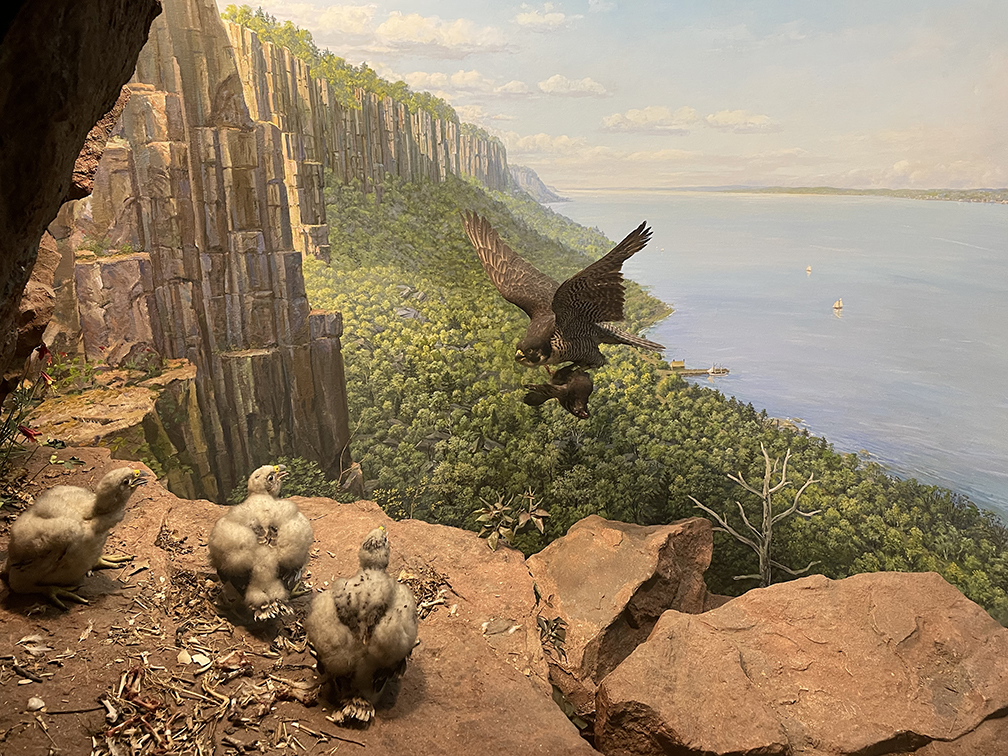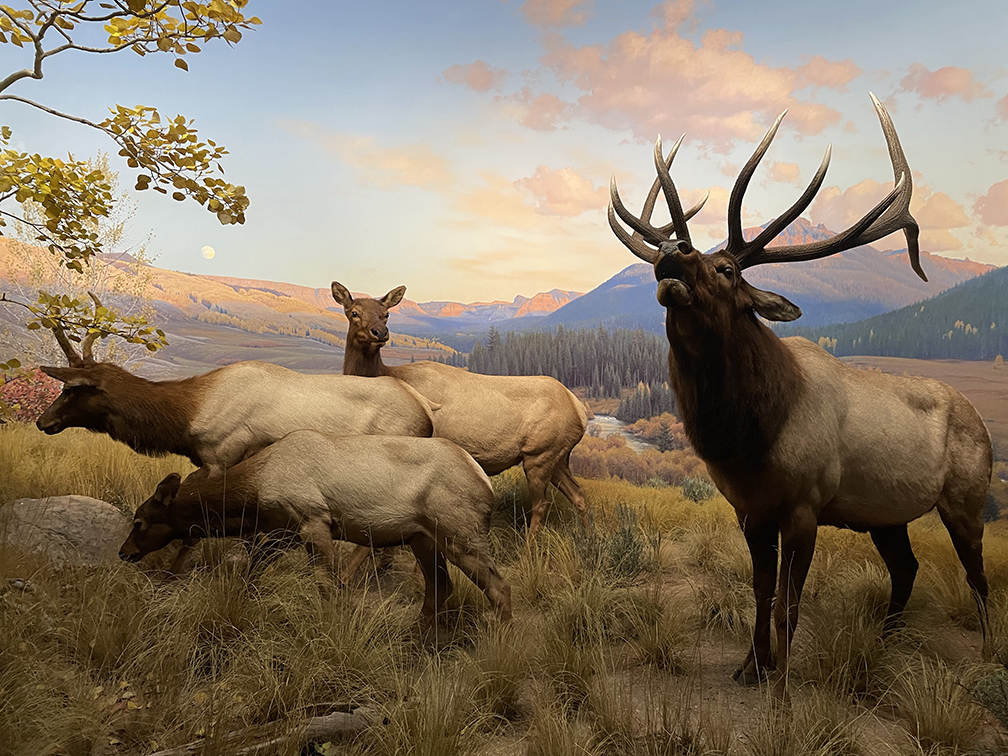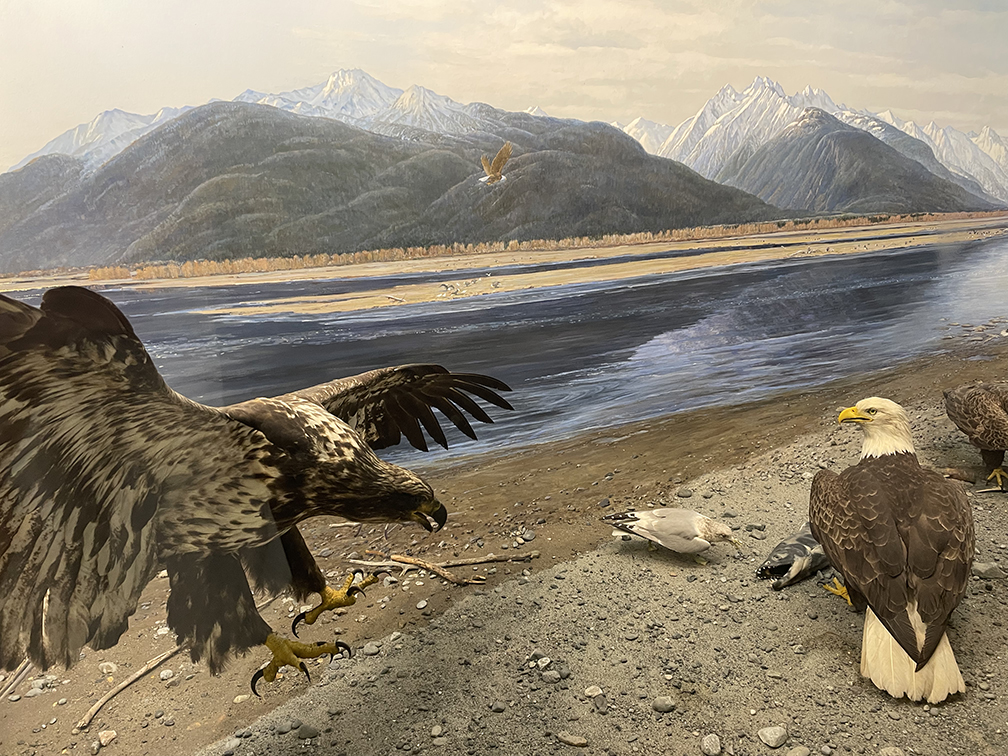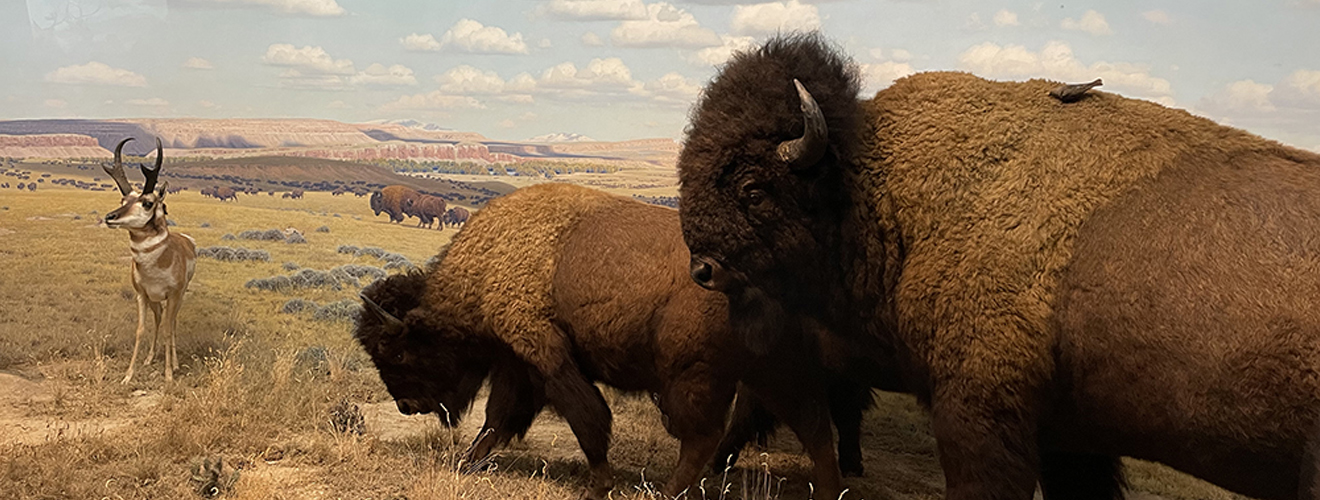
Diorama Artists — The Unsung Heroes of the American Museum of Natural History
On a recent trip to the American Museum of Natural History I wandered through the North American Mammals and Birds halls. The low light and dark wood enhance the dramatic effect of the lighting within its dioramas. The exhibit curators chose our most majestic and iconic animals—oversize bears, bugling elk, soaring falcons—to describe our nation’s animals. For the first time, the background paintings and foreground scenes popped out at me as equally deserving of applause. Without the context of the habitat, these animals would seem far less grandiose. The more I looked, the more I admired the work.

Curiosity revealed that artists were commissioned in the 1930s, 40s and 50s. Each diorama is based on an actual location. The artist would visit the scene, take multiple photographs and do a series of plein air paintings. James Perry Wilson, one of the most acclaimed museum artists, used stereoscopic slides to help him recall 3D details. Back at the museum, a grid was applied to the background walls to help accurately transfer the scene to the diorama. Tricks learned from studying Renaissance paintings on ceilings and domed walls were adapted to the rounded walls of the diorama settings. Another team of artists depicted the foreground elements using real and artist-generated plants, rocks, water, snow and other animals likely to share the habitat. Together, the background painting and foreground artistry are what really give the museum goer the context of how they live. Go visit!

